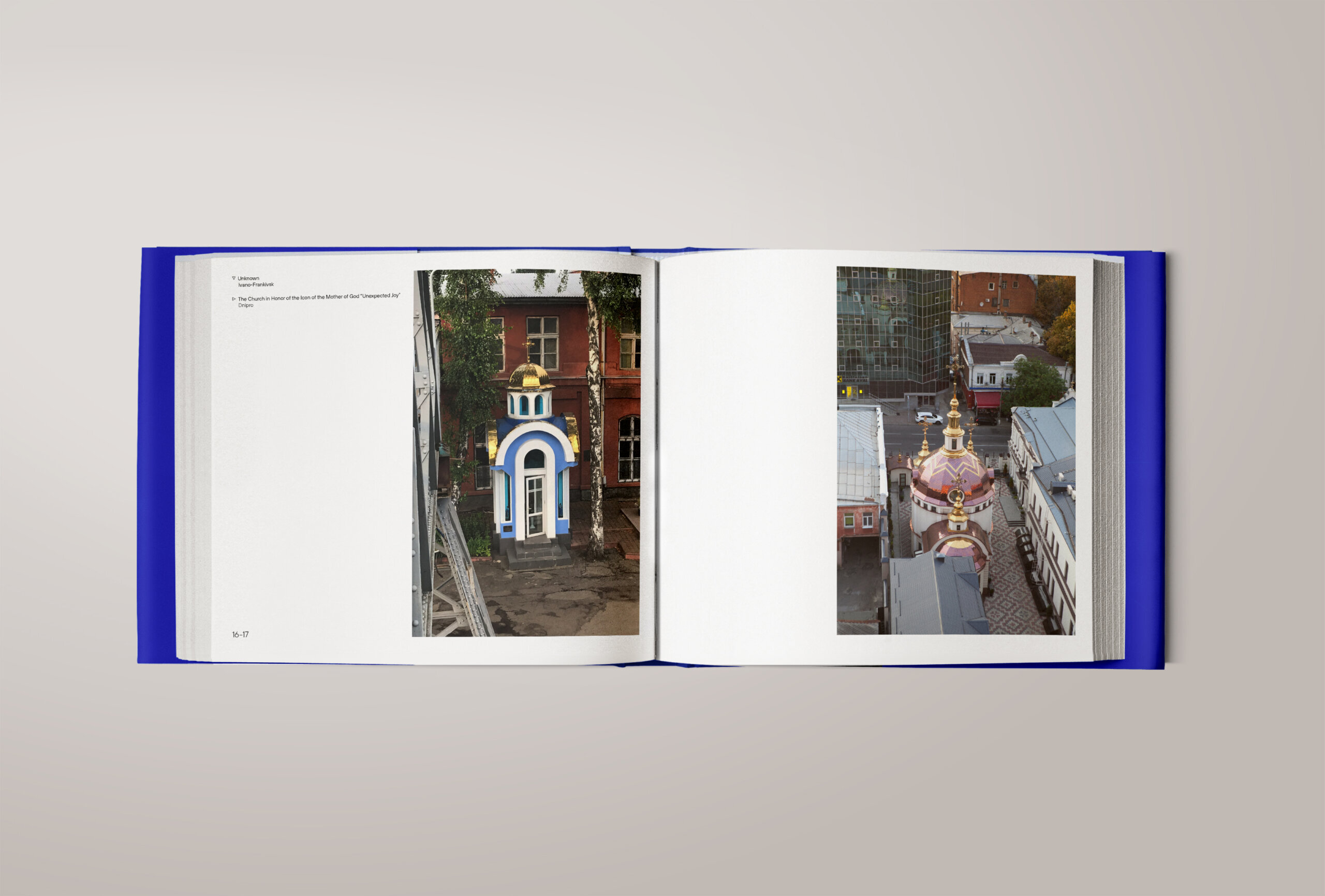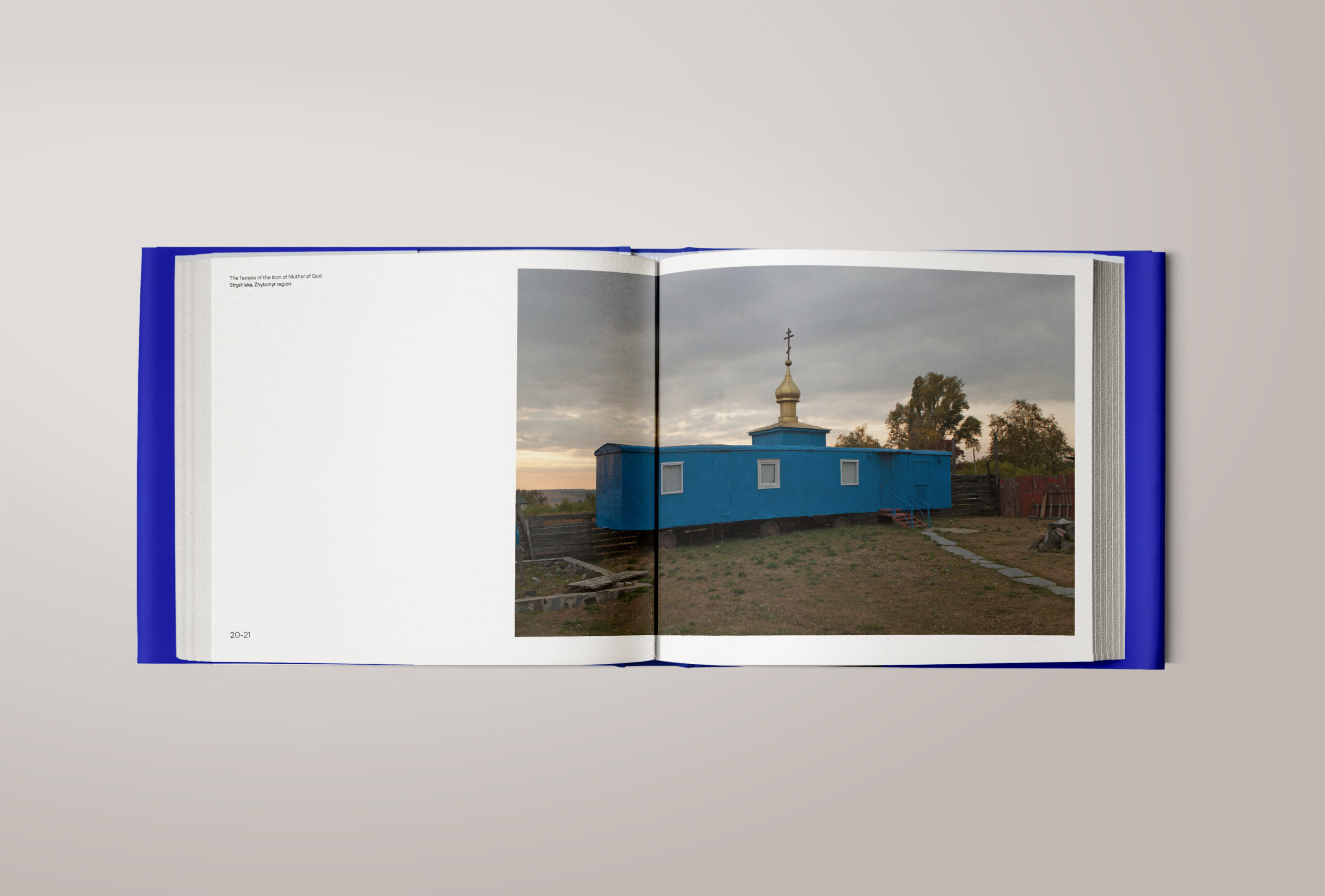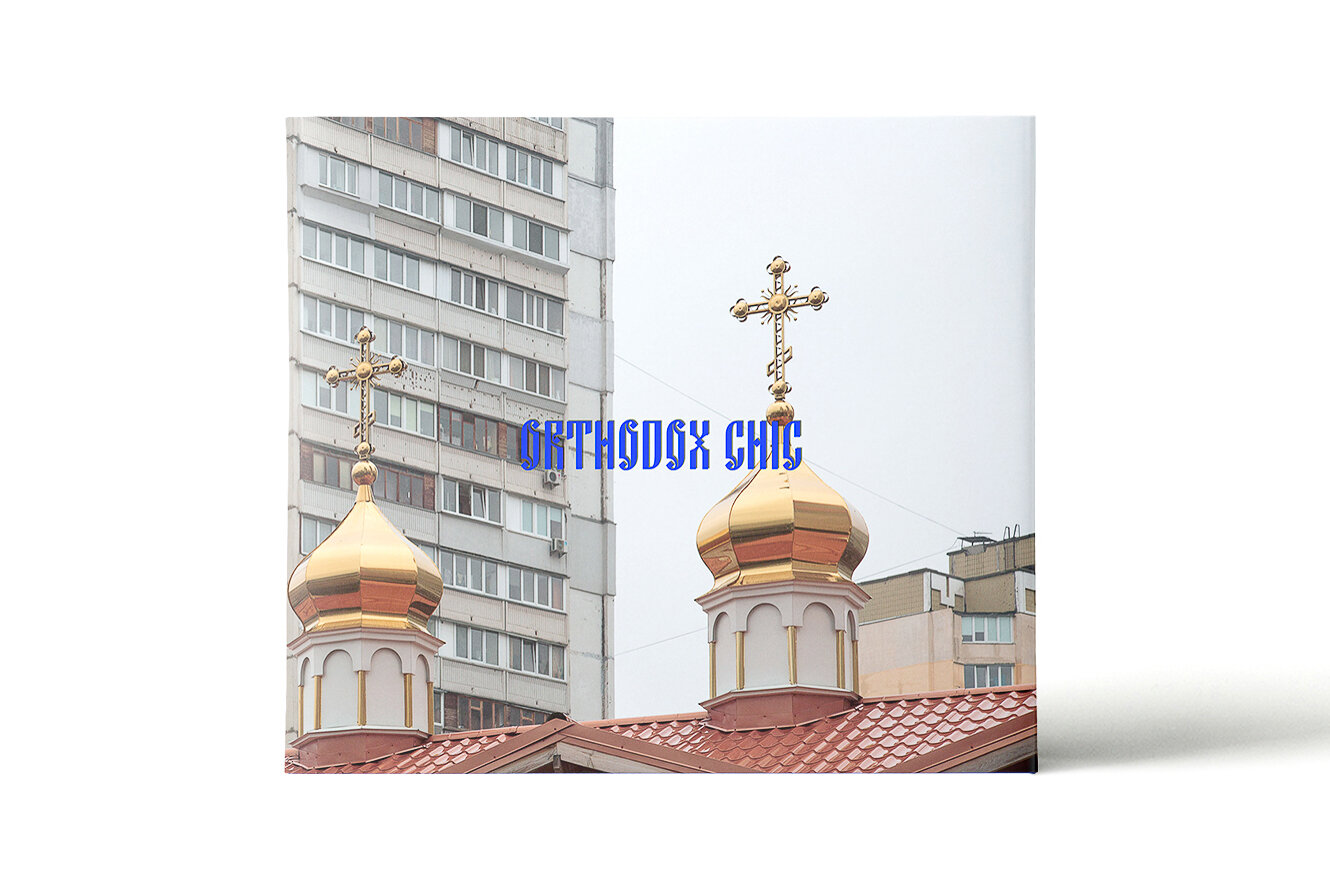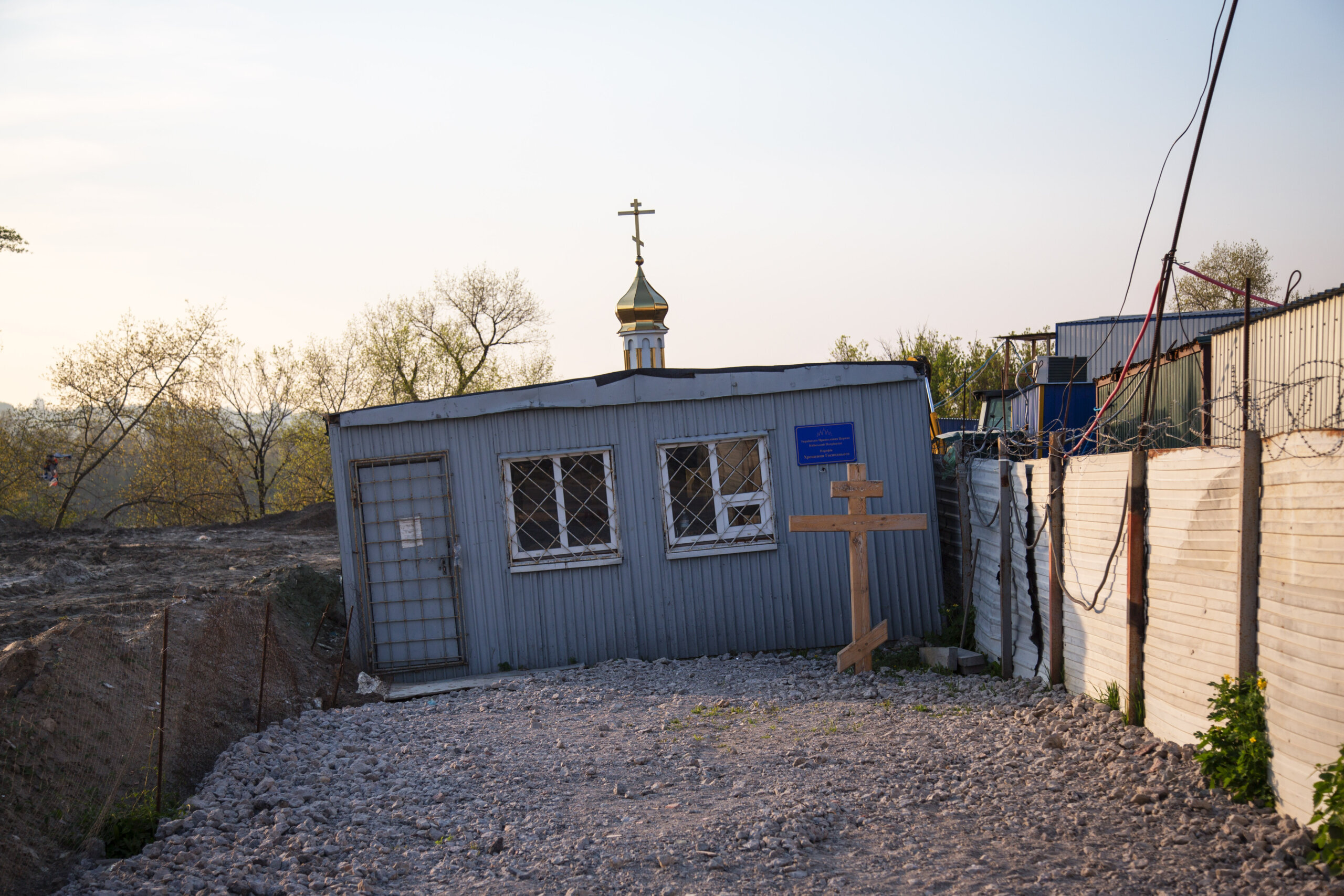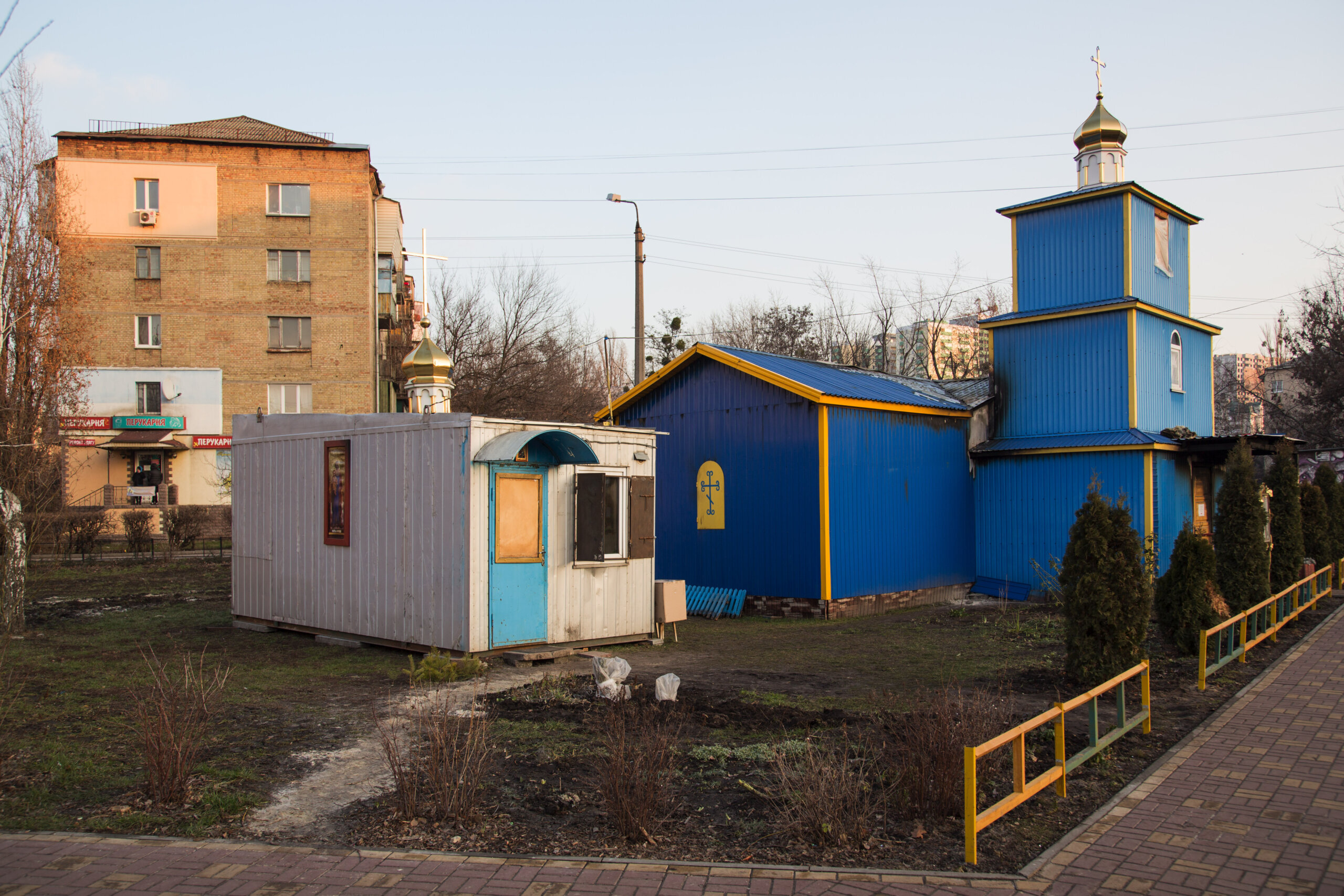It starts with a cross.
No one knows who put it there, in this small Ukrainian town. Maybe it’s just locals who are trying to strengthen their faith.
Unless that cross becomes a booth. Now it’s a tiny makeshift shrine for worship. Since it doesn’t take up too much space or draw too much attention, it stays put.
Until suddenly the booth is gone, replaced by a planned-out structure built around it, which grows larger and larger until it becomes a full-fledged church. The illegal takeover of land has succeeded.
This practice has been widespread across post-Soviet Ukraine, used as a tool to gain land and influence by the country’s rival churches, businesses and locals.
The strange aesthetic of these improvised churches, sometimes set up in premises as bizarre as kiosks and trailers, has been captured in the “Orthodox Chic” photo book.
“These newer buildings don’t say so much about how architecture has changed, rather about the country’s social, political and economic development,” the publication’s introduction reads.
The latest addition to the “Chic” series by Osnovy publishing house, “Orthodox Chic” came out in 2020. With an introduction and captions in English, the book is available to buy online for Hr 500 ($18) or $39 if ordered from abroad with the delivery cost included.
Wonderful and odd
Osnovy is a well-known publishing firm at the forefront of edgy creativity in Ukraine. Almost 30 years old, the company considers all of its books to be works of art, focusing on off-beat niche topics, often spotlighting Ukrainian photography and architecture.
“We really try to seek content about Ukraine that is odd, that is weird,” Dana Pavlychko, the director and owner of the publishing house, told the Kyiv Post. “We find Ukraine wonderful and odd, and this is the content that we work with.”
Osnovy launched the “Chic” series to collect visual research of local architecture and urban spaces. Its first book, “Balcony Chic,” came out in 2019, documenting the infamous do-it-yourself balconies in all their beauty and ugliness in 92 photographs from cities all over Ukraine.
Pavlychko says that there is something “super Ukrainian” about these horrible and strange balconies.
“There is no other country in the world where you will see such architecture,” Pavlychko says. “And if we talk about ‘Orthodox Chic,’ this is something super super Ukrainian, when you have these random makeshift churches just pop out of nowhere.”
Osnovy plans to continue the “Chic” series with publications focusing on Ukrainian country homes called dachas, and on pigeon lofts.
Upcycled churches
The pocket-sized book invites the reader into the bizarre world of Orthodox churches right from first glance. Without its sleeve, the publication’s striking blue cover shines, inspired by the shade often used in the design of local Orthodox churches. The title is written in gold script resembling Biblical passages, complemented by golden endpaper as if taken from the domes of the churches themselves.
The carefully crafted introduction sets the reader up perfectly for a journey through Ukraine’s Orthodox architecture, divided into six themed chapters.
The creators of “Orthodox Chic,” architects and photographers Oleksandr Burlaka and Alex Bykov, alongside artist Sasha Kurmaz focused on churches built after Ukraine gained its independence.
The country has a long complicated history with religion. Orthodoxy is practiced among the country’s majority of believers. They are, however, divided between the newly formed Orthodox Church in Ukraine and the Russian Orthodox Church headquartered in Moscow.
The architectural development of Ukrainian churches is no less complex, spanning centuries and including the Cossack Baroque style that was interrupted by the pseudo-Russian style and the Soviet Union.
After Ukraine became independent, the architectural and spatial organization of urban spaces was no longer centrally planned and there was no legal framework for regulation, resulting in a diverse pool of design and placement.
According to Burlaka, in the 1990s, architects that have never worked with churches discovered this new field and started experimenting.
“It’s interesting to see what styles they use to show belonging to one or another ideological, political group,” Burlaka told the Kyiv Post.
“It could be the Moscow Patriarchate with their specific forms, or other patriarchates trying to look differently architecturally, or the difference between corporate churches with money and churches made in small poorer communities that look more like balconies than monumental temples.”
The strangely constructed churches popped up in unusual places such as the tops of buildings, at water pump stations and even next to McDonald’s drive-throughs. More ordinary specimens can be found in the “Classic Revival” chapter.
Though people tend to be more religious in rural areas, there isn’t much money going into building massive churches there.
“Religious buildings financed by the patriarchates or by private investors are not often built in villages or in the regions, even where there is a need for such places,” art historian Asia Bazdyrieva writes in the book’s introduction.
Small communities tend to upcycle industrial architecture, using whatever materials they can find. The makeshift churches were set up in places as bizarre as old garages, train cars and storage tanks. Those are featured in the “Changing the Function” chapter.
War and faith
Churches in post-Soviet Ukraine often begin with the placement of a cross.
Locals might first notice a cross set up in a green plot of land just like the co-creator of the book Kurmaz did while growing up in Kyiv. Around 2008, he witnessed a church’s life cycle as it grows from a cross in the ground to an actual place of worship and started documenting it.
“This strangeness draws me in,” he told the Kyiv Post.
A cross can mean multiple things. It could just be a cross that locals have put up for religious motives. It could also be a way to claim “dibs” for future construction projects by corporations, as they do not need to pay taxes for the “blessed” property. It could also be the seemingly innocent start of an invasion by the Moscow Patriarchate.
One of the most famous examples is the Russian Orthodox Church of St. Nicholas of Myra, built across the Ukrainian Orthodox St. Andrew’s Cathedral on Andriyivsky Uzviz. The Russian temple is built within the grounds of a historic Ukrainian site. It stands next to the ruins of The Church of the Tithes, the first stone church built in Kyiv alongside the city’s oldest linden tree, the Petro Mohyla Linden Tree, planted in the 17th century.
The conflict between the Ukrainian Autocephalous Church of the Kyiv Patriarchate before it transformed into the Orthodox Church of Ukraine and the Ukrainian Autocephalous Church of the Moscow Patriarchate has spanned decades and continues to this day.
The Russian Orthodox Church has a deep relationship with the Kremlin and amplifies its rhetoric. In 2019, the Orthodox Church of Ukraine was granted independence, angering Russia further as Ukraine continues to fight for total independence in religious, political and social spheres.
According to Burlaka, this confrontation is reflected in the book. And Pavlychko says that aside from being a book of photography and architecture, “Orthodox Chic” is also “political commentary.”
And while some churches are used as tools of influence, others, such as the bizarre “upcycled” ones, amaze with how little believers need to practice their faith.
“A temple can be in any place,” Burlaka says. “It doesn’t have to be beautiful. It can be in a cave, a room or a prison.”
“Orthodox Chic” is available for purchase on Osnovy’s webstore for Hr 500 ($18).
